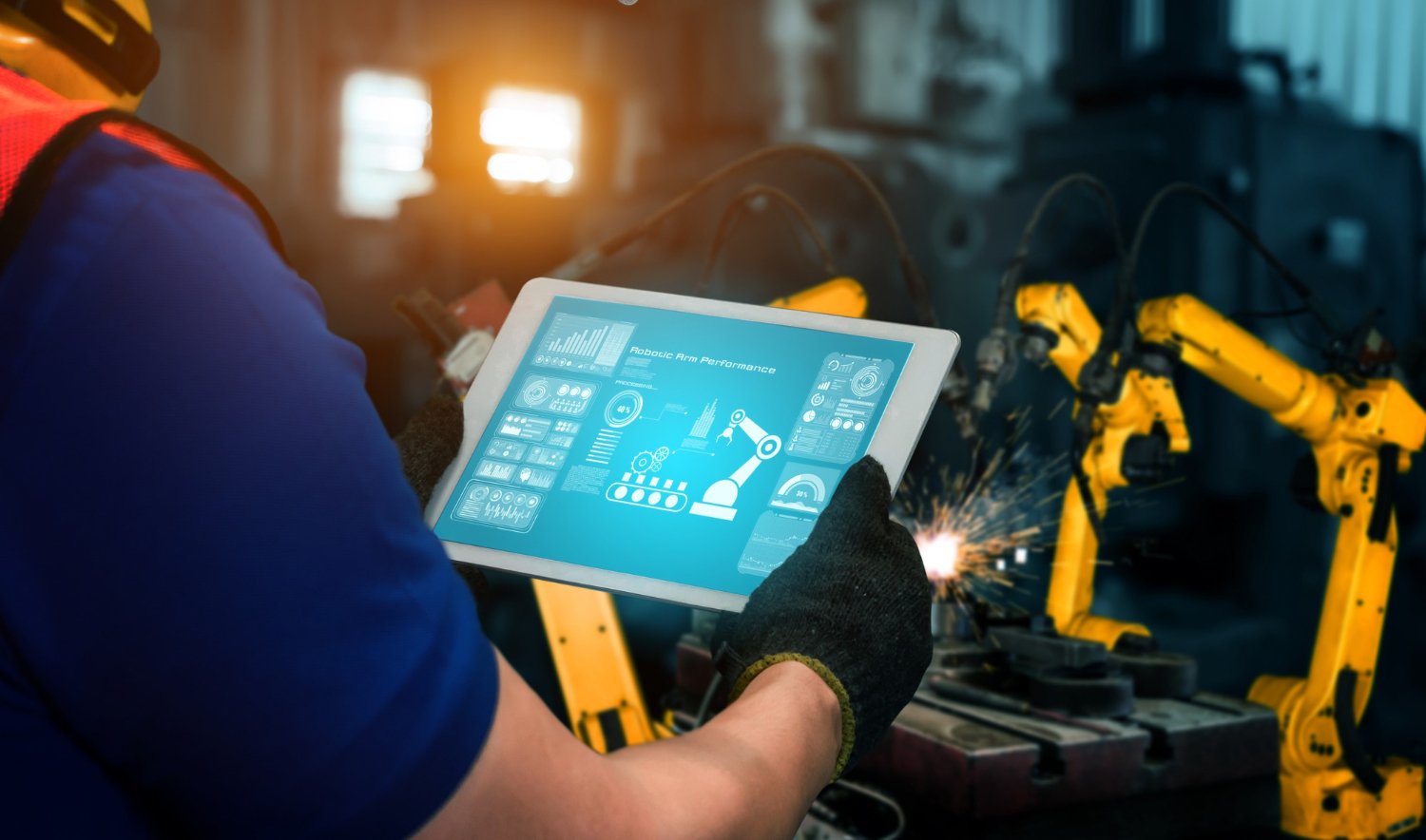
Software solutions in manufacturing encompass a broad spectrum of tools and platforms designed to streamline processes, enhance productivity, and ensure quality at every stage of production. From design conception to final product delivery, these digital systems offer unprecedented levels of control, insight, and automation, revolutionising traditional manufacturing paradigms.
The utilisation of software solutions in manufacturing is not merely a trend but a strategic imperative. By harnessing the power of computational algorithms, simulation, and data analytics, manufacturers can navigate the complexities of modern supply chains, address strict quality standards, and meet the dynamic demands of global markets with agility and precision.
From CAD/CAM software facilitating intricate design processes to simulation and analysis evaluating performances, we examine how these digital innovations are reshaping the industry landscape, driving efficiency, and empowering manufacturers to thrive in an era of rapid technological advancement.
Advantages of integrating software solutions in CAD/CAM:
Integrating software solutions into the gear production process offers a multitude of advantages. These solutions enable precision in design through sophisticated CAD tools, ensuring that gear geometries meet exact specifications with minimal error. By facilitating seamless communication between design and manufacturing stages, software solutions streamline the production workflow, reducing lead times and minimising costly errors associated with manual data transfer.
Simulation and analysis tools allow for virtual testing of gear designs, optimising performance and durability while minimising material waste and prototyping expenses. While software-enabled automation enhances productivity by orchestrating machine operations, scheduling tasks, and managing inventory with unparalleled accuracy. Last but not least, by providing real-time visibility into production metrics and quality parameters, integrated software solutions empower manufacturers to make informed decisions, proactively address issues, and continuously improve processes, ultimately driving sustainable growth and profitability in gear manufacturing operations.
CAD/CAM software plays a pivotal role in gear design and the generation of toolpaths, offering indispensable capabilities that significantly enhance efficiency, accuracy, and innovation in the manufacturing process. In gear design, CAD software provides engineers with powerful tools to create precise and intricate gear geometries, allowing them to explore various configurations, tooth profiles, and specifications with ease. The ability to visualise and manipulate designs in a digital environment facilitates rapid iteration and optimisation, enabling engineers to achieve optimal performance and functionality while meeting stringent tolerances and quality standards.
Moreover, CAD software enables seamless integration with simulation and analysis tools, allowing engineers to conduct virtual testing and validation of gear designs before physical prototyping or production. This not only reduces the time and cost associated with traditional trial-and-error methods but also minimises the risk of design flaws and manufacturing defects, ensuring that gears perform reliably under real-world conditions.
On the manufacturing side, CAM software complements the design process by translating CAD models into precise toolpaths that guide machining operations. By leveraging advanced algorithms and machining strategies, CAM software optimises toolpaths for efficiency, tool life, and surface finish, maximising the productivity of CNC (Computer Numerical Control) machining centres and other manufacturing equipment. Additionally, CAM software incorporates features such as automatic tool selection, collision detection, and adaptive machining, further enhancing process reliability and reducing the need for manual intervention.
The integration of CAD/CAM software in gear design and manufacturing not only accelerates the product development cycle but also enables engineers to push the boundaries of innovation, creating gears that are lighter, stronger, and more efficient than ever before. By harnessing the power of digital design and automated manufacturing, companies can stay ahead of the competition, deliver superior products to market faster, and drive sustainable growth in the dynamic landscape of gear manufacturing.
Integrated software solutions play a crucial role in the simulation and analysis of gear manufacturing processes by providing engineers with sophisticated tools and capabilities to optimise designs, evaluate performance, and mitigate risks before physical production begins. These solutions enable engineers to create detailed virtual models of gears and their associated manufacturing processes, allowing for accurate prediction of behaviour under various operating conditions.
Through advanced finite element analysis (FEA) and gear tooth contact analysis, engineers can assess factors such as stress distribution, load-bearing capacity, and tooth meshing characteristics, ensuring that designs meet performance requirements and withstand real-world demands. Integrated software solutions facilitate virtual prototyping, enabling engineers to iterate and refine designs quickly and cost-effectively, minimising the need for costly physical prototypes and accelerating time-to-market. By leveraging simulation and analysis capabilities, manufacturers can optimise gear designs for efficiency, durability, and reliability, ultimately enhancing product quality, reducing development costs, and maximising customer satisfaction.
Software solutions in the context of Industry 4.0. & IoT:
In the context of Industry 4.0, software solutions play a central role in driving the digital transformation of manufacturing processes, facilitating the integration of cyber-physical systems and enabling unprecedented levels of connectivity, automation, and data-driven decision-making. These solutions serve as the backbone of smart factories, providing the infrastructure and tools necessary to orchestrate and optimise complex manufacturing operations in real time.
By leveraging advanced technologies such as artificial intelligence, machine learning, and big data analytics, manufacturers can harness the wealth of data generated by IoT-enabled devices and sensors to gain actionable insights into production performance, identify opportunities for efficiency improvements, and predict and prevent potential disruptions. Moreover, software solutions enable seamless communication and collaboration across various systems and stakeholders, breaking down silos and fostering agility and responsiveness in the face of changing market demands.
IoT integration further enhances the capabilities of software solutions by enabling machine connectivity and remote monitoring, thereby transforming traditional manufacturing equipment into intelligent, networked assets capable of autonomous operation and self-optimization. Through IoT-enabled sensors and actuators embedded within machinery and production systems, manufacturers can capture real-time data on equipment status, performance metrics, and environmental conditions, allowing for proactive maintenance, predictive maintenance, and condition-based monitoring. This not only minimises downtime and maintenance costs but also extends the lifespan of equipment and ensures consistent product quality. IoT integration enables manufacturers to implement closed-loop control systems, wherein data insights are used to dynamically adjust production parameters and optimise processes in response to changing conditions, ultimately driving continuous improvement and competitiveness in the era of Industry 4.0.
“Global consumer behaviour is driving a change in product development companies to build better products in less time. To cater for these changes, companies are making their design to manufacturing processes more robust and collaborative using integrated CAD CAM CAE and MES tools. Moving from point solution to integrated workflows in product development so that they can transfer the information downstream and bring analytics from the production. This approach helps the companies to connect the complete value change and make communications easier between departments giving it the flexibility of change and easy adoption of new products,” said Mr. Vipul Agarwal, Technical Specialist – Autodesk Fusion, Autodesk India.

Vipul Agarwal, Technical Specialist –Autodesk Fusion, Autodesk India
Final Takeaway:
The integration of software solutions into gear manufacturing processes offers a multitude of benefits while presenting certain considerations for successful implementation. Key benefits include enhanced precision and efficiency in design and production, facilitated by CAD/CAM software, leading to reduced lead times and minimise errors. Simulation and analysis tools enable virtual testing and optimization, ensuring that gears meet performance requirements and withstand real-world conditions. Additionally, integration with Industry 4.0 principles and IoT connectivity empowers manufacturers with real-time insights, enabling proactive maintenance, predictive analytics, and dynamic process optimisation.
However, implementing such solutions requires careful consideration of factors such as initial investment costs, compatibility with existing infrastructure, and workforce training needs. Ensuring data security and privacy in the age of interconnected systems is paramount. Nevertheless, by overcoming these challenges and leveraging the transformative potential of integrated software solutions, manufacturers can unlock new levels of productivity, agility, and innovation, positioning themselves for success in the rapidly evolving landscape of gear manufacturing. Ultimately, embracing digitalisation and investing in software-driven technologies will not only drive operational excellence but also enable manufacturers to thrive in an increasingly competitive global market.